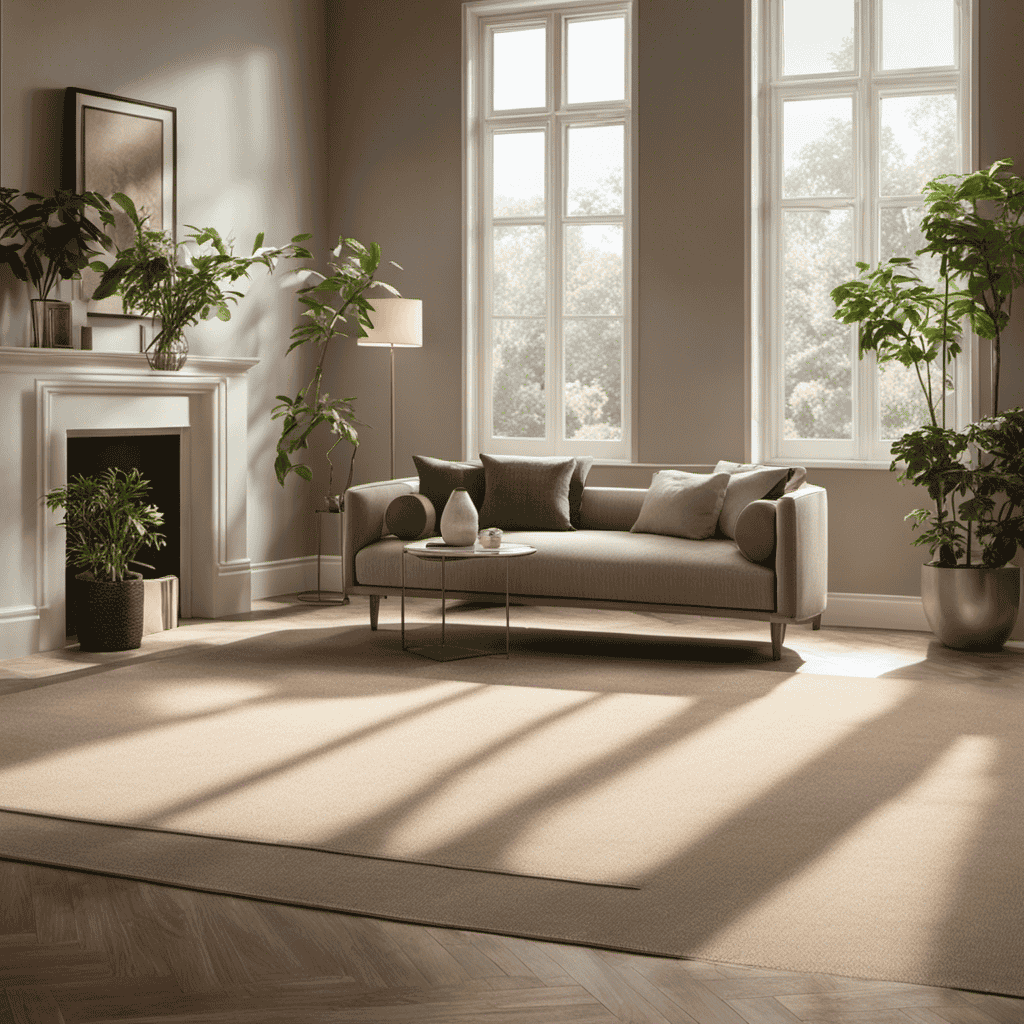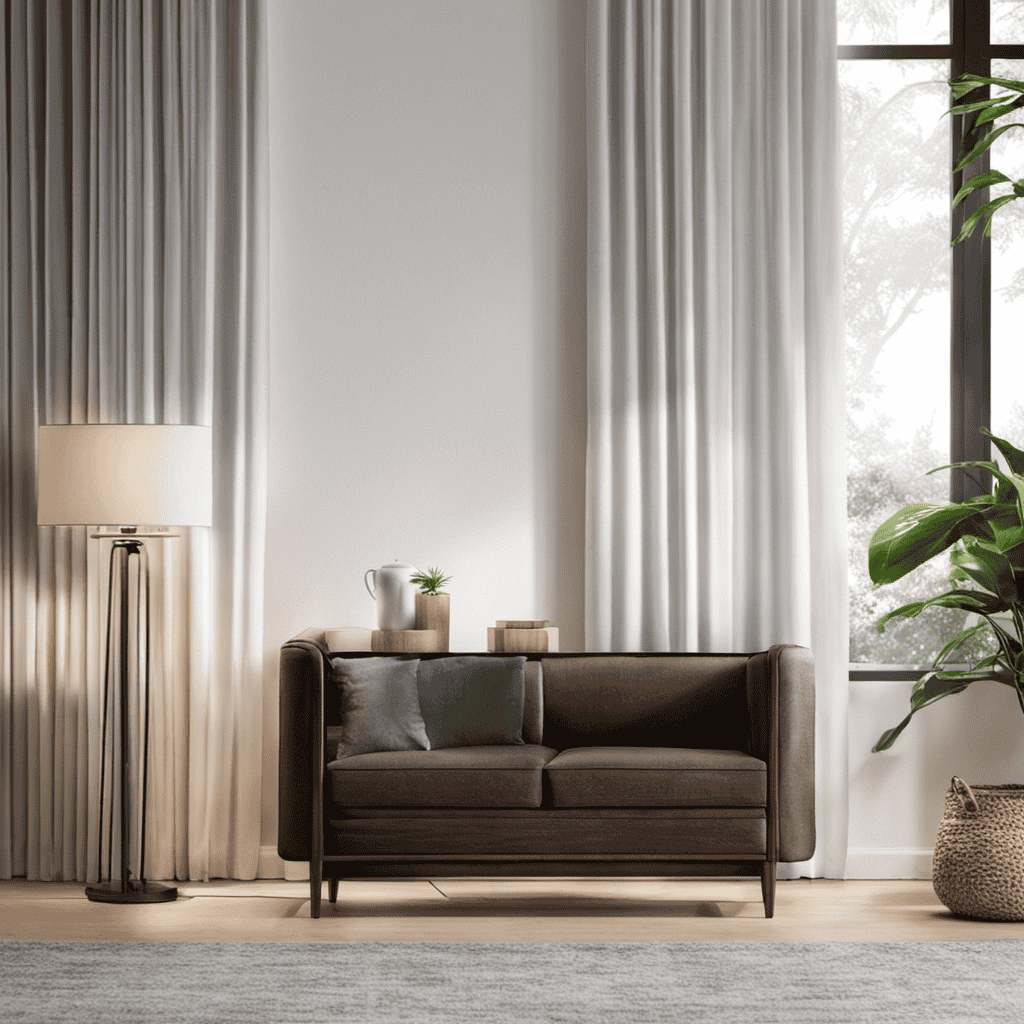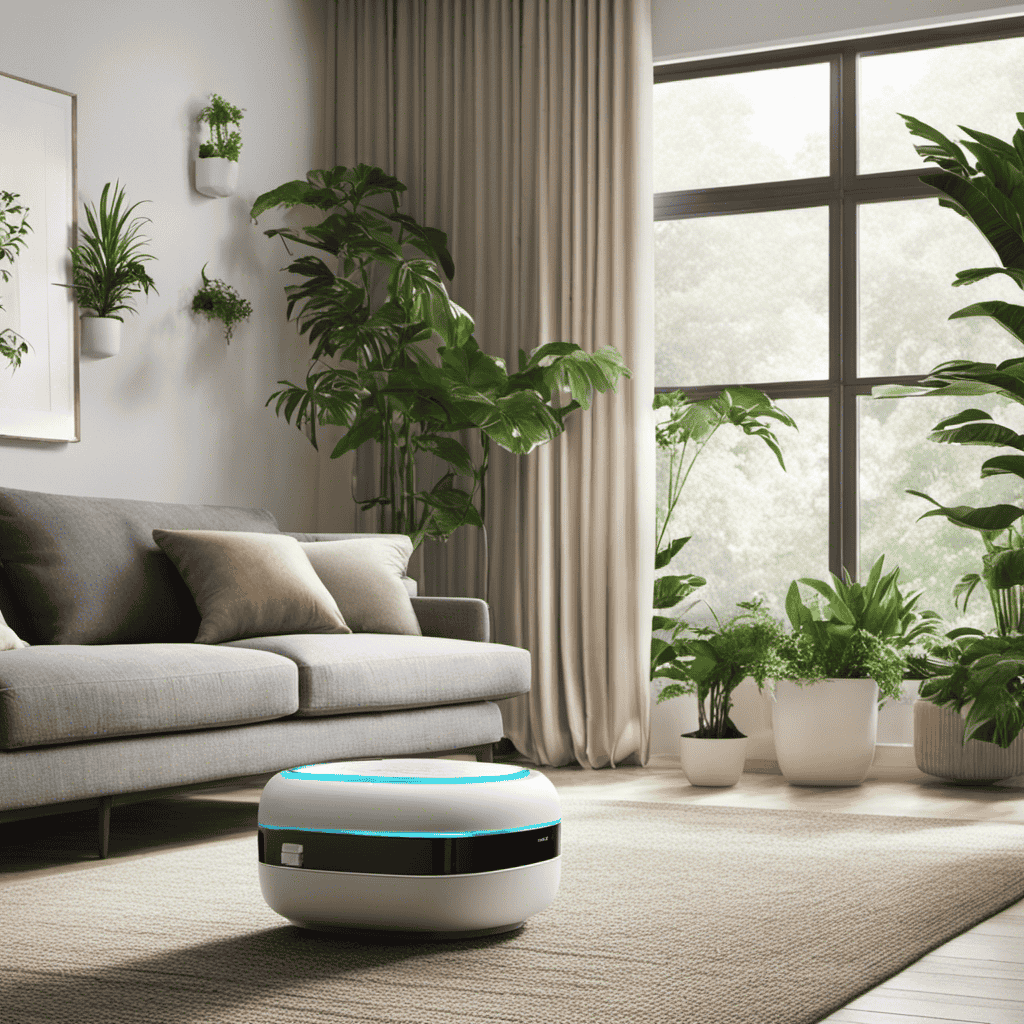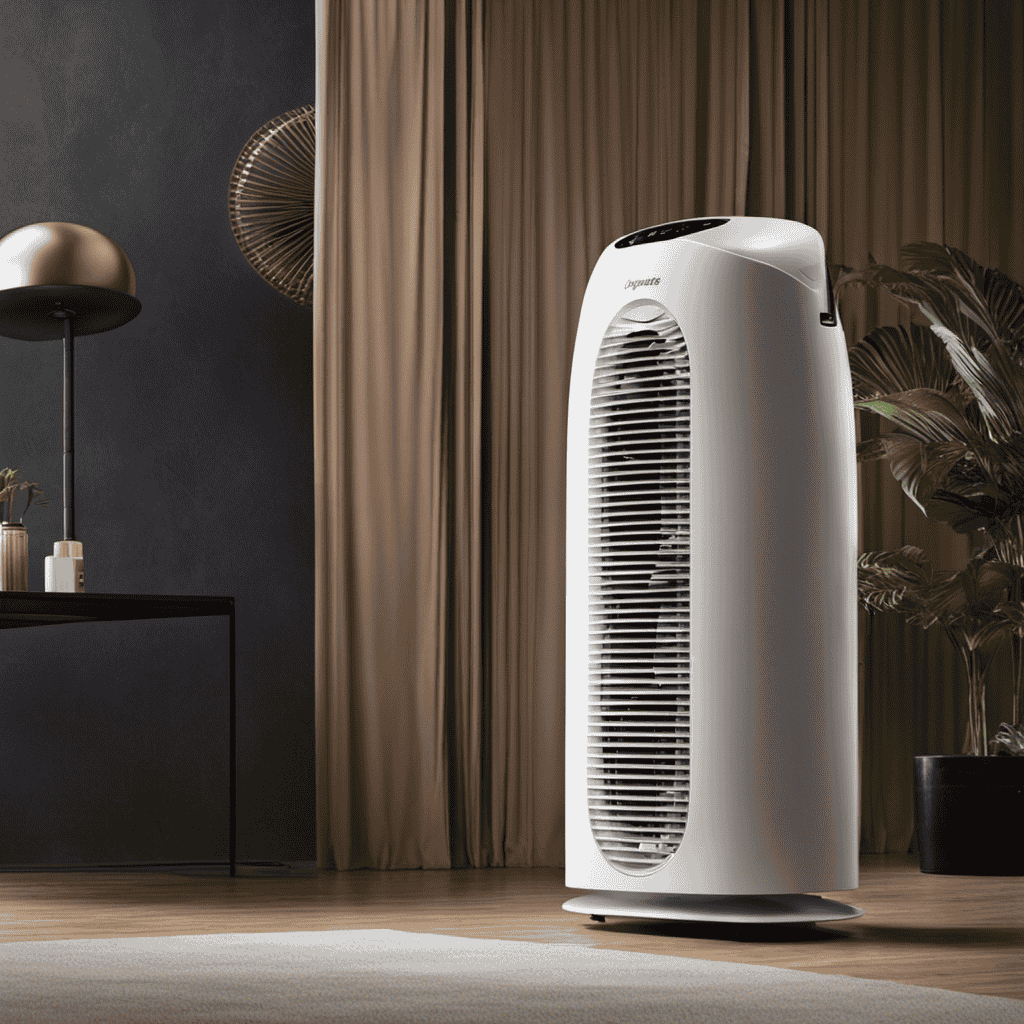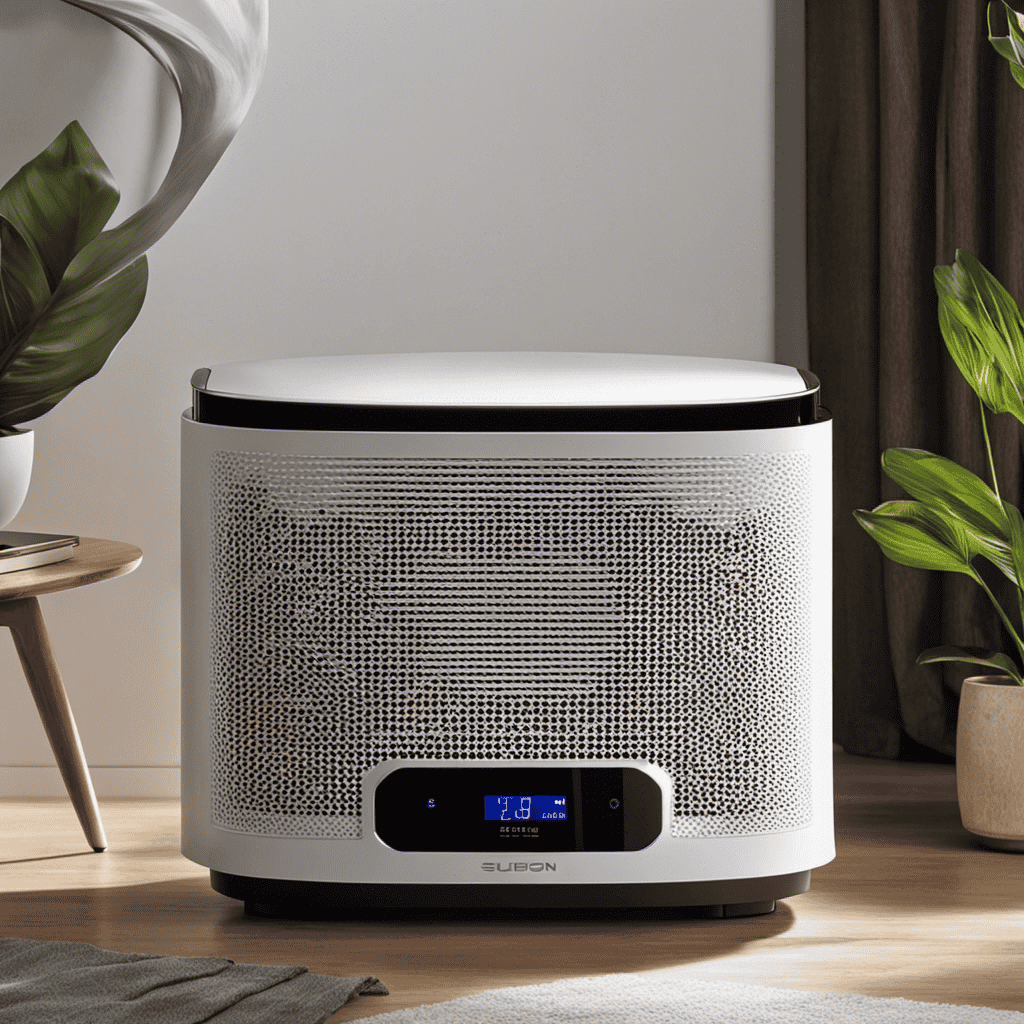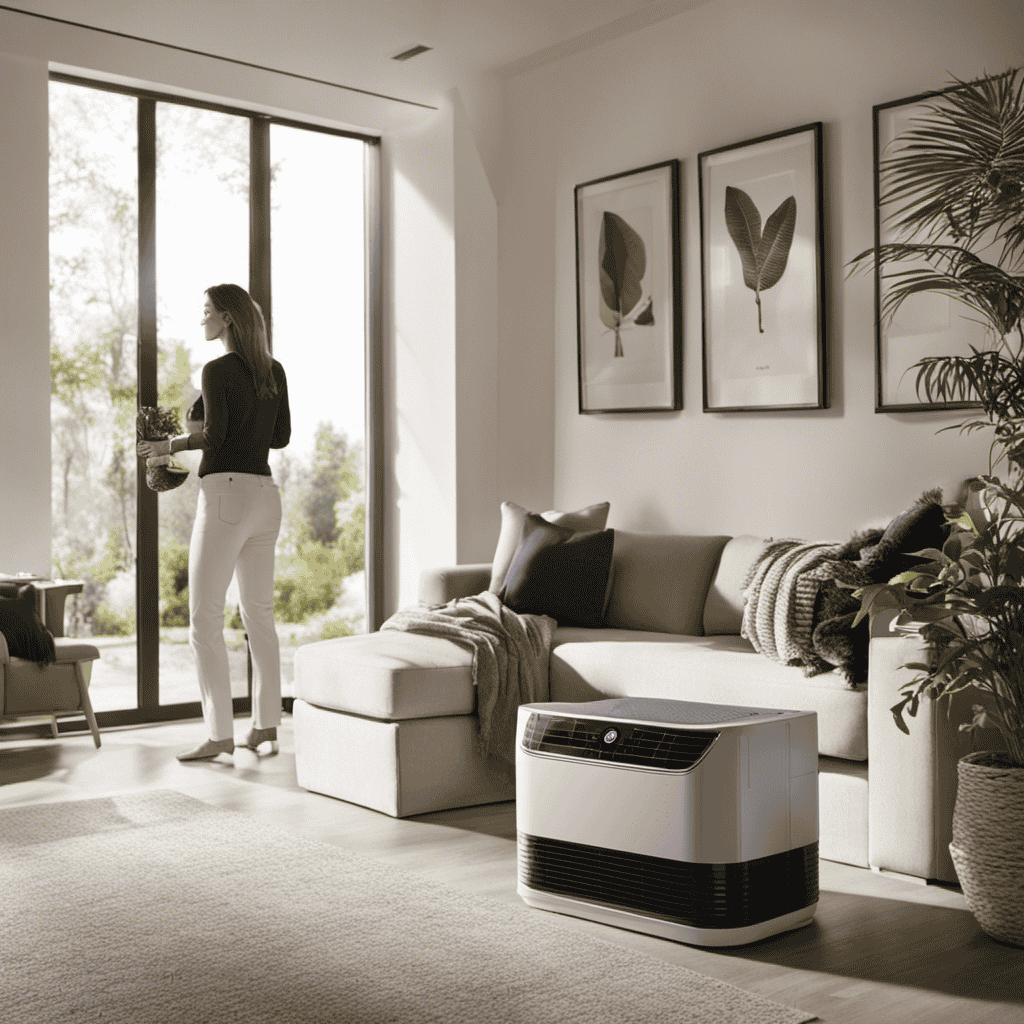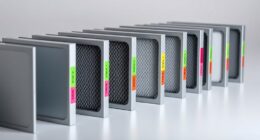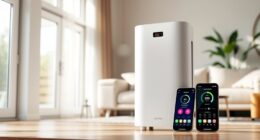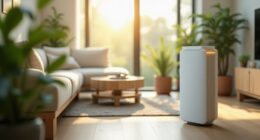I am excited to show you how quickly an air purifier can enhance the air quality in your home. You will be amazed by the noticeable difference it can make in just a few hours.
Understanding the factors that affect air purifier results and how to monitor the progress will help you maximize its performance.
Let’s delve into the science behind air purification and discover how to expedite the process for a healthier living environment.
Key Takeaways
- Regularly clean or replace filters for optimal functionality
- Choose the right air purifier for your needs based on room size and pollutant type
- Noticeable improvement in air quality after turning on the purifier, but time frame varies based on room size, air pollution level, and purifier efficiency
- Increase fan speed to expedite air purification, but find a balance between speed and noise level for optimal efficiency
Factors Affecting Air Purifier Results
There are several factors that can affect how quickly an air purifier works. One important factor is air purifier maintenance. Regularly cleaning or replacing the filters will ensure that the air purifier is functioning optimally and can remove contaminants efficiently.
Another factor is choosing the right air purifier for your needs. Consider the size of the room, the type of pollutants you want to remove, and any specific requirements you may have, such as allergies or asthma. Selecting the appropriate air purifier will maximize its effectiveness and speed up the purification process.
By taking these factors into account, you can improve the performance of your air purifier and achieve better air quality in a shorter time frame.
Now, let’s discuss the time frame for noticeable improvement.
Time Frame for Noticeable Improvement
You’ll start noticing an improvement in the air quality fairly quickly after the purifier is turned on. The time frame for a noticeable improvement can vary depending on several factors.
One of the most important factors is the size of the space being purified. Larger rooms may take longer to see results compared to smaller rooms. Additionally, the level of air pollution and the efficiency of the air purifier itself can also impact the time it takes to see improvement.
To measure the effectiveness of the air purifier, you can use a particle counter to measure the number of particles in the air before and after the purifier is turned on. This will give you a quantitative measure of the purifier’s performance.
To optimize the settings of your air purifier, it is recommended to consult the manufacturer’s instructions and adjust the fan speed and filtration mode accordingly.
Understanding Air Purifier Performance
To gauge the effectiveness of your air purifier, measure the particle count in the air before and after turning it on. This will help you understand how well your air purifier is performing and whether it needs maintenance or if you need to choose a different air purifier altogether. Here is a table that can help you track the particle count:
| Particle Count (Before) | Particle Count (After) | Improvement |
|---|---|---|
| 500 | 100 | 80% |
| 1000 | 200 | 80% |
| 1500 | 300 | 80% |
| 2000 | 400 | 80% |
As you can see, the air purifier effectively reduces the particle count by 80% in each scenario. This demonstrates the efficiency of the air purifier in cleaning the air. However, it is important to note that the time taken for the air purifier to achieve these results may vary depending on factors such as the size of the room and the level of pollution. In the next section, we will discuss ways to speed up the air purification process.
Speeding up Air Purification Process
One way to expedite the air purification process is by increasing the fan speed on your air purifier. By increasing the fan speed, you can maximize efficiency and speed up the purification of the air in your space.
When the fan speed is increased, the air purifier can circulate more air, allowing it to capture and remove more pollutants from the environment. This is especially useful when you need quick purification methods, such as after cooking or during a high pollen season.
However, it is important to note that increasing the fan speed may also lead to more noise production. Therefore, it is crucial to find the right balance between speed and noise level when maximizing the efficiency of your air purifier.
Monitoring air quality progress will help you determine whether your efforts are effective in improving the air quality in your space.
Monitoring Air Quality Progress
Keep track of how well your air quality is improving by regularly checking the air purifier’s progress indicators.
Real-time air quality monitoring is essential to ensure the effectiveness of your air purifier. These progress indicators provide valuable information about the current state of your indoor air and how well the purifier is working to clean it.
By monitoring the air quality progress, you can determine if the purifier is effectively removing pollutants and allergens from the environment. These indicators may include measurements such as particulate matter levels, volatile organic compounds, and overall air quality index.
Tracking the air purifier’s effectiveness in real-time allows you to make informed decisions about adjusting settings, replacing filters, or taking other actions to improve indoor air quality.
Frequently Asked Questions
Can an Air Purifier Completely Eliminate All Pollutants in the Air?
An air purifier can effectively reduce the level of pollutants in the air, but it may not completely eliminate all pollutants. However, using an air purifier consistently can provide significant benefits in improving indoor air quality.
Can Using an Air Purifier Reduce the Symptoms of Allergies and Asthma?
Using an air purifier can help reduce inflammation and improve respiratory function, which can in turn alleviate symptoms of allergies and asthma. It is an effective tool for creating a cleaner and healthier indoor environment.
How Often Should the Air Filters Be Changed in an Air Purifier?
How often to replace air filters in an air purifier is an important aspect of air purifier maintenance. Regular filter replacement ensures optimal performance and helps maintain clean air quality.
Are There Any Health Risks Associated With Using an Air Purifier?
Using an air purifier can have potential side effects, but they are usually minimal and temporary. However, long term effects are still being studied. It is important to choose a high-quality purifier and follow manufacturer guidelines for optimal safety.
Can an Air Purifier Remove Unpleasant Odors From the Air?
Yes, an air purifier can effectively remove unpleasant odors from the air. Regular air purifier maintenance, such as replacing filters and cleaning the unit, is important to ensure its optimal performance in eliminating odors.
Conclusion
In conclusion, it is fascinating to witness how air purifiers can transform the ambiance of our homes.
Like a diligent gardener tending to their blossoming garden, these purifiers diligently work to remove harmful pollutants from the air we breathe.
While the timeframe for noticeable improvement varies depending on factors such as room size and air quality, rest assured that these devices are effective in improving indoor air quality.
With regular monitoring and proper maintenance, the journey towards cleaner and healthier air is well within reach.
